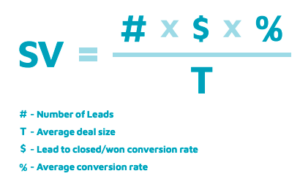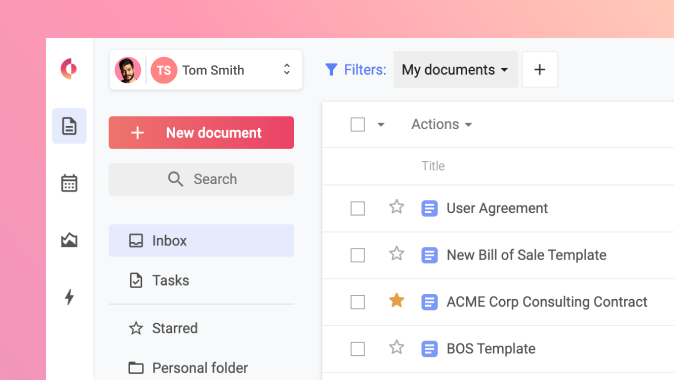The New State of Sales and Why Contracts Matter
This is the first in a series of four posts on how to accelerate deals and win more revenue with contracts.
You’ve put in the work—the calls and emails, demoing your heart out. The numbers look good and you feel confident about crushing quota this month. But should you?
The deal isn’t done until the ink dries and just because the proposal is sent, it doesn’t guarantee a signature—sometimes the most promising deals die once the contract is sent. Why? Time kills deals.
The pace of business has accelerated and expectations of customers and partners have changed. Recognizing this, the advent of CRMs created a new way to manage customer relationships—billing systems changed, technology evolved. What hasn’t changed, however, are contract processes.
Overly complex or lengthy negotiations, lost contracts, and compliance concerns, like version control issues, thwart sales efforts and slow deal velocity, sometimes to a screeching halt.
This four-part series covers the core concepts that make sales teams successful when it comes to contracts, and shows sales leaders and executives how to create repeatable processes for faster negotiations, faster signatures, and bigger deals.
The New State of Sales and Why Contracts Matter
Can you imagine doing sales today without a CRM?
Not long ago, if a buyer needed to buy, say, a dishwasher, they would drive to the nearest appliance store, look at the dishwashers, and talk to the salesperson on the floor. A few years before that salespeople were making house calls.
Now, with the Internet, social channels, and the rise of information sharing, buyers are more educated— and they have more choices. They surf corporate websites to identify and qualify vendors. They engage peers on social media to learn more about potential solutions, products, and providers. Sales is no longer the sole source or gatekeeper of the information.
Enter the CRM. Customer Relationship Management Platforms (CRMs) like Salesforce made it possible to track what buyers are reading, how they’re interacting with a brand or company on social, what actions reps are taking. They created an effective way to manage relationships in a way that matches the new pace of global business. They put the people in sales.
From a business perspective CRMs made it easier to track efficiency, pipeline, and ROI. Able to pull aggregated data—conversion rates, sales velocity, cost per opportunity, and a slew of other performance metrics—CRMs provide a clearer picture of the health and future of a business.
The current state of contract execution in most sales organizations is not promising. Contracts aren’t done quickly or at scale. Often the equivalent to “hurry up and wait,” pushing hard to get the verbal agreement only to wait days for a contract to be generated, to patiently await the drawn out negotiation process of emailing proposals back-and-forth (running the risk of working on different versions and killing the deal altogether), only to then experience the sting of waiting for approvals.
Ultimately when signatures stall, deals fall into the proposal graveyard, with little chance of being resurrected. Sales processes have changed because they had to. Until recently, how proposals and sales contracts are generated, sent, and managed hadn’t caught up.
Calculating sales velocity
To make the most use of this guide it’s helpful to know how effective your current processes are. If there was only one metric to rely on to benchmark growth and efficiency, sales velocity would be it. Do you know what your current sales velocity is?
Containing four variables—average deal size, number of opportunities, conversion rate, and sales length— sales velocity can gauge the effectiveness of an overall selling process.

When it comes to understanding the efficacy of existing sales contracting processes the key metric in this equation is sales cycle length.
Sales cycle length is the average conversion time, in days, it takes for the sales team to take an open opportunity and convert it to a closed deal. A multitude of factors play a part in the time-to-conversion, including overall sales efficiency, sales-marketing alignment, product market fit, product quality, pricing, product complexity, deal size—even time of year.
While some of these things are beyond sales’ control, there are things sales can do to ensure success and a quick close. B.A.N.T., qualifying based on Budget (B), Authority (A), Need (N), and Timing (T), or the like acronym is one example, which can help set sales up for success out of the gate. Once the verbal yes is received however, the biggest opportunity to shorten time-to-signature is in writing the contract.
In Part Two of our series, we’ll discuss the 5 essential elements of a sales contract.
Want to talk about contracts?
Concord’s mission is to help companies achieve scalability and efficiency by automating their most central process, contracts. The cloud-based solution enables over 300,000 users around the globe to create, collaborate, sign, store, and manage their agreements all in one place. Founded in 2014 and headquartered in San Francisco, Concord is built by business for business.



